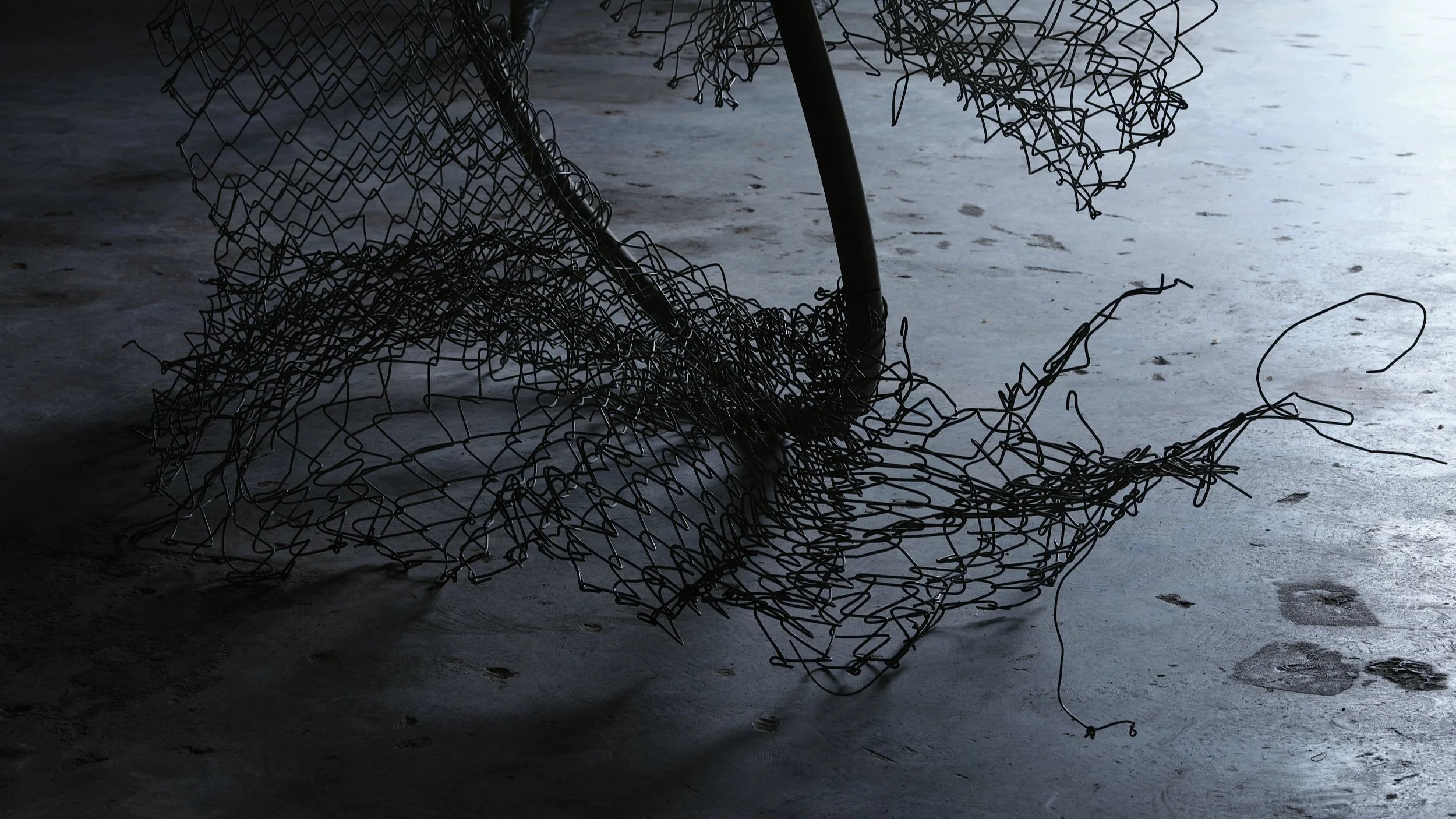Melanie Arnold, Recurring Remainder, 2020
Transitional Objects & the Work of Melanie Arnold
August 2022
“I have made the proposition that nowadays we perceive reality primarily in terms of information. As a consequence there is rarely a tangible contact with reality. Reality is robbed of its presence. We no longer perceive its physical vibrations. The layer of information, which covers objects like a membrane, shields the perception of intensities. Perception, reduced to information, numbs us to moods and atmospheres. Rooms lose their poetics.” (Byung-Chul Han)
In Byung-Chul Han’s new reality objects are being displaced by digital nonobjects (undinge). Trust in a continuous and stable solid-object must now compete with infomania - with its constant refreshing rush toward the new. Reality is becoming cloudier and lacking in continuity. There is no time to pause for a cup of tea. And anyway, is object-permanence still a thing in an age of cloud computing and tablets for toddlers?
Which got me thinking about transitional objects. The common definition of the transitional object refers to that given to a baby to enable it to self soothe, to transition to a place of separation from the Mother - the first ‘not-me’ object, that operates as mother-substitute.
It strikes me that in the face of infomania, art objects may occupy this role of tangible comfort object. Arnold’s ‘transitional objects’ help me process the object-displacement of a digital existence. Comprised of material stuff overlaid with history in use, they operate between matter and Thing; between functionality and art object; and also, it seems, between solid object and information.
Within her practice Arnold is offering us, the viewer, “Objects as resting places for life” (BCH). Her work acts as a kind of slow food for the eyes and brain. The temporal stability of the tangible takes on the role of contemplative meditative object, both as an interlude from digital sensory overload, and a mindful reengagement with the discarded and obsolete.
As a woman of a certain age, I feel a modicum of affinity with the functionally superseded, and Arnold’s objects call me to care for them. To look, to pay slow attention to all the details, however timeworn. The Latin term cura- (to take care of, give attention to, have concern for) gives us the word curation. The curatorial choices Arnold makes in her presentation of found objects, both as regards selection and installation of the relics, are key to our dialogue with the work.
David Joselit’s recent book Heritage and Debt discusses three categories of found object appropriation within art practice. Firstly, the readymade operates as an ontological challenge – as both object and idea, it equates the work of art to a fungible commodity. The classic example here is Duchamp, with works such as Fountain or In Advance of the Broken Arm. The second typology deploys the readymade semantically as a lexical element within a creative ‘text’. The selected component object contributes to decoding the overarching meaning of the work. He uses the example of Robert Rauschenberg’s Rebus to illustrate this.
Joselit’s final category, and the one at play here, comprises the cultural dimension where objects are chosen explicitly for their life histories: “Appropriated objects acquire meaning through their histories, which tie them to various forms of heritage. Time marks things in a variety of ways, signalling their age, their function, and the kind of care they receive from users” (Joselit 126).
Here the physical object operates as tangible mnemonic device, taking on the mantle of embodied history. Luke Willis Thompson utilises this to a high degree within his practice. His readymades stand witness to critical historical events. Untitled, 2012 (garage doors from Mahia Road) and Sucu Mate/ Born Dead, arrive so laden with baggage as to be quite overwhelming. “Works of art that address cultural properties… solicit the marks of time: they seek witnesses to its passage” (Joselit 130).
Arnold’s works generally do not refer to a specific event or history, but rather gesture towards their former life in use. The relics could be seen as artefacts from an earlier time, as archaeological fragments even. Is there perhaps a danger here of deifying the relic? – or of creating a Pompeii-esque spectacle? (Where are the people voids who once used these things?)
I realise this text raises more questions than it provides answers. It seems to me that the works operate primarily as an invitation to the observer to slow down - one that gives their mind permission to wander and wonder. In this instance Arnold does not simply elevate her relics by presenting them within an art world context. The work simultaneously highlights a kind of degradation in structures and institutions – as remnants of a culture which is passing. In a sense, rather than a memorial monument, these artefacts operate as a reference archive.
The end of something does not necessarily imply nostalgia.
“Walter Benjamin’s angel of history is confronted with the catastrophic consequences of human action. In front of him, the heap of debris of history grows towards the sky. But he cannot remove it, because the storm from the future called progress carries him away.” (BCH 51)
Robyn Walton
Byung-Chul Han, interviewed by Gesine Borcherdt, trans. Liam Tickner. “I Practice Philosophy as Art.” Art Review, December 2021, pp50-53.
Joselit, David. Heritage and Debt: Art in Globalization, The MIT Press, 2020.
